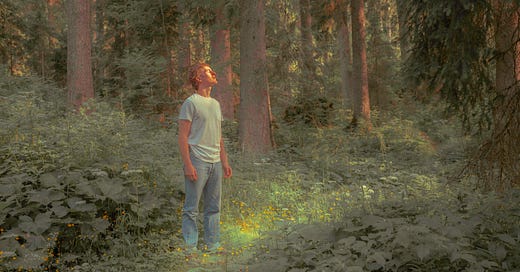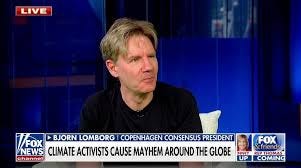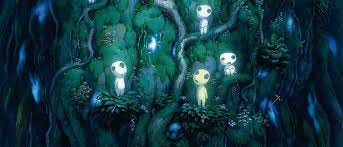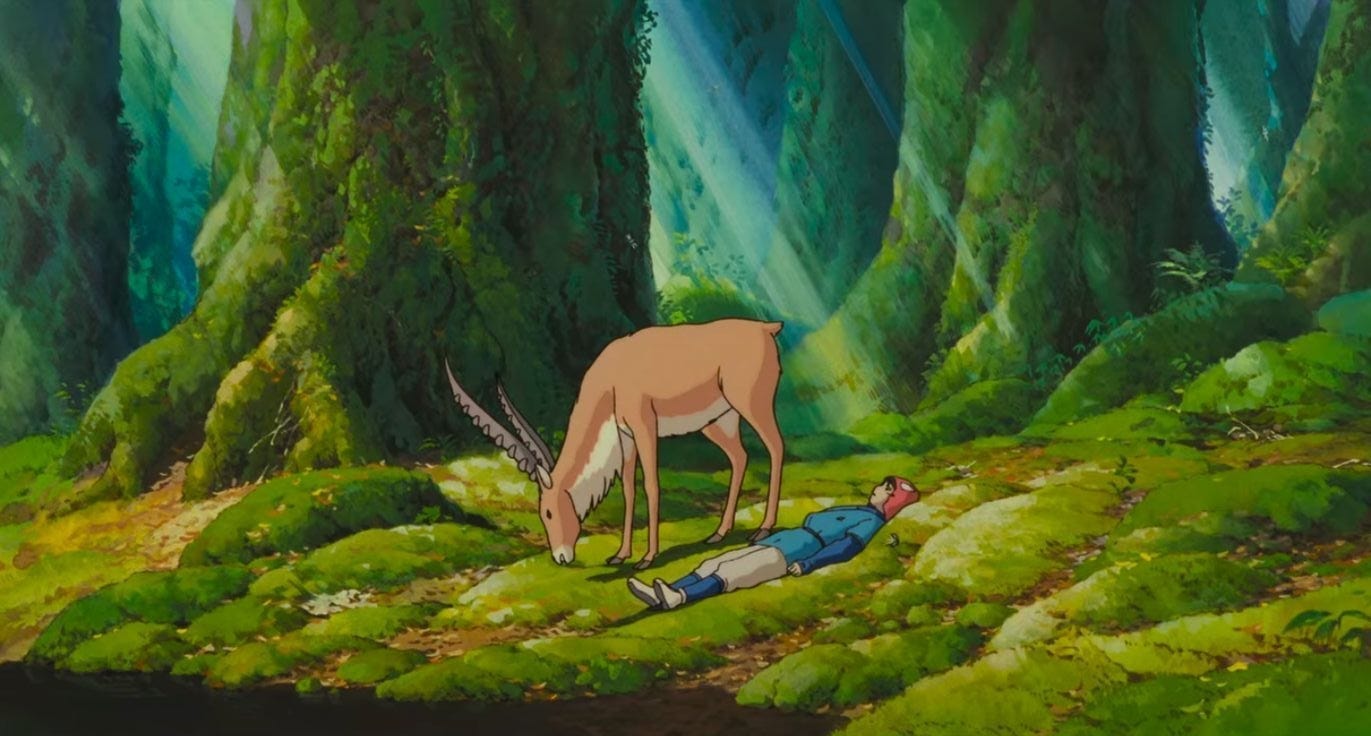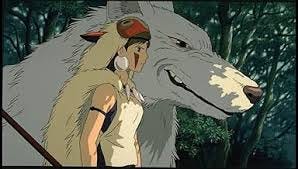Disenchantment as an archetype
Literature—both fiction and non-fiction—is full of themes of mourning for what has been lost in the name of modern “progress.” J.R.R. Tolkien’s The Lord of the Rings is steeped in this grief. The forests are losing their awareness. The Elves are departing, and with them, the last traces of magic are fading from the world. This sense of decline—the waning of enchantment—is a recurring theme in mythologies and stories across cultures.
But this isn't just a motif in fantasy. Philosophers and thinkers throughout history have expressed this feeling of loss in literal terms. In The World We Used to Live In, Lakota scholar Vine Deloria Jr. writes that the world has been fundamentally altered by colonization and the abandonment of Indigenous practices. He argues that certain non-metaphorical powers once accessed by medicine people—forms of interspecies communication and spiritual knowledge—have diminished or vanished altogether as a result of modernity's disruptions.
We don’t need to search far to see this grief echoed in popular culture. Across the world, people mourn vanishing species, disappearing ecosystems, and the slow erasure of the wild. Environmental activists put their bodies on the line to resist the forces of overdevelopment. Viewers report feeling overwhelmed and despondent after watching documentaries about ecological collapse. Mourning, in this context, is not subtle—it is global and visceral.
The expression of such a loss in so many of the world’s cultures speaks to the extent to which this feeling of disenchantment is felt. Across both Indigenous and settler traditions, there exists a shared belief that the world we once inhabited was more alive, more relational, more spiritually charged. The “other-than-human” was not just a backdrop, but participants in the world’s unfolding—a presence that shaped how we understood reality.
Our most powerful institutions deeply understand that the majority of humans loathe the destruction of our ecosystems. For that reason, they invest tremendous effort into telling an alternative stories of a soulless world of natural resources. Turn on cable news and you’ll see journalists, whose salaries are paid by corporations, claiming its actually the Lorax whose ruining everything.
Our culture has a neurotic split between the stories we love the most and the stories we tell in our editorials. While every parent I know hopes their children will sympathize with the cause of the Lorax, they will then turn around and say well of course we have to allow the logging of our last remaining old-growth. It will help our bosses create more value.
Two competing narratives battle it our for our hearts and minds. Our hearts have always belonged to our big emerald home. But our minds have been convinced by our immensely powerful story-tellers: billionaire owned Wall Street Journal, billionaire owned Washington Post, billionaire owned Fox News, and billionaire owned CNN, and so on.
So, I’ve become a fan of translating myths. In a way, it is an attempt to heal the split between our mythic stories and our non-fiction ones. To put it simply. The story of disenchantment is the most real story that I know.
Disenchantment and the land
If you have a smartphone, you probably already know: the world is changing fast. Overconsumption and unchecked development are consuming ecosystems at an astonishing rate. Across nearly every region on Earth, birds, insects, mammals, and marine species are under serious threat of extinction.
No matter where one lives—urban or rural—the average person today interacts with only a fraction of the creatures that previous generations did. What it means to be human is already radically different than it was for our ancestors. Our species evolved in a world full of other species—minds, songs, patterns, and presences. That world is vanishing.
Encounters with wildlife and untamed landscapes evoke awe and wonder—emotions that have been shown to support psychological well-being and cooperative behavior. These experiences were once common, even daily. Now, they are rare. The baseline of what we expect to see, hear, and feel in nature has shifted, and most of us don't even realize what we've lost.
Disenchantment in stories
The disenchantment archetype expresses this sense of loss through recurring stories of a world that has lost its magic. In Game of Thrones, the characters acknowledge that previous eras had heroic people, dragons, and people who could perform spells, but it is silly to believe in that now. Countless movies use this same device.
In some of the most explicitly environmental versions of this theme, the story includes an item that is symbolic of the planet’s overall vitality.
In Netflix’s The Dark Crystal, the crystal itself is perfectly intertwined with the planet Thra. As the ruling class (Skeksis) drains the crystal of its power, the planet itself experiences a black liquid pestilence. Of course, this metaphor is pretty on the nose. The ruling class on our own planet uses oil as a means of wringing profit from a planet whose vitality decreases as the ruling class enriches itself to the end.
The 2009 film Avatar shows a biodiverse planet that is being destroyed by greedy people who see the lure of tremendous profit. This message obviously resonated with people. Not only was it one of the largest blockbusters ever, but I have since seen people comment “Earth is Pandora” in online comment sections of videos of natural beauty being destroyed.
Your planet’s vitality is your vitality
One common literary device on this theme is a symbol of the planet’s vitality. In Avatar, this symbol is the Tree of Souls. In the story, the tree seems to facilitate the interconnectedness of life on the planet. The Omatikaya tribe use the tree to connect directly to the planet Pandora.
If the Tree of Souls is cut down, the planet will go on, but there is a loss in the vitality of life on the planet. In addition, the tribe itself will survive, but they will no longer be able to hear the voice of the planet they live on. They will no longer maintain a deep connection with the animals they have formed partnerships with. The diminishing of the planet is the diminishing of the creatures that live on it.
What this archetype is actually communicating is that even if humans survive, the draining of a planet’s natural resources makes people less human. And in this mythical storytelling, less human means less vibrant, less connected, less wild, less intuitive, and less free.
The Spirit of the Forest.
Hayao Miyazaki’s Princess Mononoke is one of my favorite versions of the disenchantment story because it goes deeper into the archetype.
The story follows Ashitaka, a young prince who becomes cursed after defending his village from a demon-possessed boar. Seeking a cure, he travels west and finds himself caught in a fierce conflict between the industrialized settlement of Iron Town, led by the ambitious Lady Eboshi, and the gods and spirits of the forest, who are fighting to protect their land from destruction. The film explores themes of environmental destruction, spiritual disenchantment, and the clash between human progress and ecological balance.
What fascinates me most about Princess Mononoke are several key lines that reflect a deeper layer of disenchantment that resonates with emerging themes in science, ecology, and systems thinking.
The antagonist, Lady Eboshi, is determined to kill the “spirit of the forest,” a mystical, horned stag-like creature with godlike powers. This spirit is capable of shapeshifting, healing, and more importantly, its health is directly tied to the well-being of the entire forest, similar to the Dark Crystal and Avatar discussed above.
Lady Eboshi justifies her actions by saying, “Without that ancient god, the animals here would be nothing but dumb beasts once again. Once the forest has been cleared and the wolves wiped out, this desolate place will become the richest land in the world…”
In other words, the forest might still exist, but its deeper vitality—its soul—would be gone. The animals, who currently exhibit intelligence and agency, would regress into mindless beasts. And in another scene, one of the boars defending the forest laments that his species are becoming “stupid” as a result of the forest’s diminishment.
Miyazaki’s narrative aligns with a systems-based view of ecology. Many theorists argue that consciousness is an emergent property of complex systems. If a brain contains a sufficient number of neural connections, it can support awareness, memory, and cognition. But this principle is not exclusive to brains. In fact, the discourse around artificial intelligence relies on this understanding. Additionally, scientists confirm that cognition in animals can occur in bodies outside of the central nervous system. Octopuses think throughout their bodies, human cognition includes other organs like the gut, and so on.
Ecosystems like old-growth forests are highly complex systems that exchange a staggering amount of information. The spirit of the forest can be seen as a symbol for a forest that has sufficient complexity and diversity to become something greater than the sum of its parts.
Forest-dwelling animals like owls, cats, and mustelids already demonstrate cognitive intelligence developed by forests. In other words, forest-dwelling creatures have brains which we already recognize have awareness, memory, and other cognitive abilities. So, cognition is already present in forest species, but is there an emergent cognition for the forest as a larger organism?
Non-fiction writers are starting to take this question seriously. There has been an explosion in research of forest and plant intelligence. We have only recently begun to understand the vast mycelial networks beneath the forest floor that help trees communicate and share information (what some call the “wood wide web”). With each passing year, our understanding of these interspecies information flows expands.
There is no scientific consensus on “Gaia theory” or other theories of interspecies cognition. It is hard to come up with claims that are falsifiable. But with each passing year, there seems to be findings that push our understand of complex systems forward. And while anthropomorphizing the kind of intelligence that might be found in non-human systems may be misguided, it is becoming increasingly difficult to deny that there is more thinking and feeling present than the mechanistic paradigm would allow for.
When we destroy old-growth forests, we don’t just lose individual species—we unravel entire webs of interconnection. Mycelial pathways are severed. Mammalian cultures are disrupted and forgotten. The forest’s ability to process and distribute information (the capacity for cognition) is diminished.
The forest spirit in Princess Mononoke is a fictional metaphor for this ecological reality. The industrialists in the story understand that severing the vitality of the forest leads to a dulling of the intelligence and richness of the beings that depend on it.
I once heard a wildlife biologist describe how wolves, like many mammals, pass cultural knowledge through generations. One particular wolf pack had developed a strategy to hunt goats by driving the goats uphill where other wolves waited at the top. This clever technique worked because it circumvented the goats’ natural advantages. But when elder wolves were hunted and killed, this knowledge was not passed down, since the behavior was transmitted through behavior and observation rather than innate instinct. The younger wolves, unable to hunt goats, turned instead to cattle—bringing them into conflict with ranchers. This echoes the very start of Princess Mononoke where the feral hog shows altered behavior by coming out of its habitat to attack human settlements.
Similarly, elephants memorize ancestral migratory routes essential for survival through droughts and famines. These routes are passed down through the matriarchs of the herd. When these elders are killed, or when their routes are blocked by development, that cultural knowledge is lost. The elephants don’t simply lose access to physical territory—they lose the wisdom that enabled survival within that territory.
This points to something deeper than habitat loss. It's a loss of culture. Elephants and wolves begin to appear as if they can no longer survive, but the truth is that we’ve disrupted the systems of memory and transmission that once enabled their thriving. Even if we miraculously reversed development and restored these landscapes, the knowledge might not return with them. The routes would remain unremembered. The wolves would no longer know how to hunt. They would, as in Princess Mononoke, “become beasts.” Reversing that loss would require significant time and loss to acquire the information again.
These real-world cases echo the mythic narrative: when the vitality of the ecosystem is lost, the creatures within it are diminished. They are no longer participants in a rich, intelligent web of life, but reduced to beasts.
So it is not just that we are experiencing a mass extinction event. Disenchantment is not just the quantitative loss in species on Earth, but the qualitative loss. We can still go into the woods, but do we really experience what so many humans of the past expressed, that feeling that the forest is watching us?
What does it mean?
The world we used to live in is no longer here. We longer see flocks of birds so vast they block out the sun. We no longer see rivers so full of fish you can walk across the river on their backs. We no longer experience that feeling, described so frequently in stories of old, of knowing that forest is watching us.
And perhaps more importantly, we have lost a part of our own vitality. As ecopsychology argues, the loss of wild spaces corresponds with a loss of the wild spaces of our own psyche. And the loss of a relationship with the natural world means we no longer have access to the mirrors of nature that once gave cultures so much wisdom.
Culture comes from the land, and we now have human cultures emerging from a land that has been cultivated by an ownership class for control and domestication.
The disenchantment archetype is deep in our collective consciousness. It is present in our most influential stories. Growing up with these stories, I understood that we are losing something vital when we lose the vitality of our planet. But our media is almost entirely owned by the owners of industry. Our non-fiction that most people have access to tells a story of a dead world that we must take dominion over. Therefore, I think we need new ways to tell the story that bridge the gap between what we feel to be true and how we think of what is happening.
When we treat these stories as merely symbolic, we risk turning grief into nostalgia. We keep the story alive but fail to respond to what it points to: a living world, now wounded, and our responsibility to fight for it.

